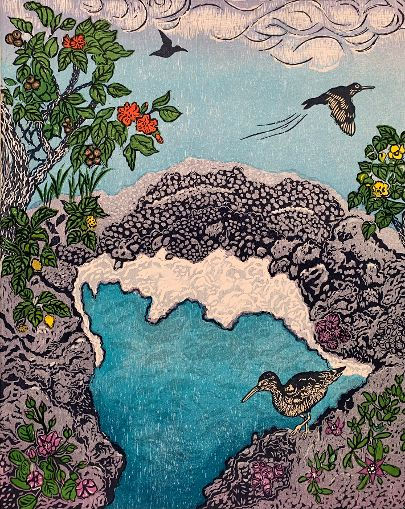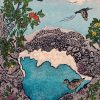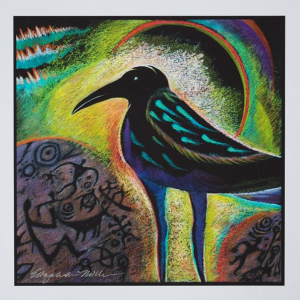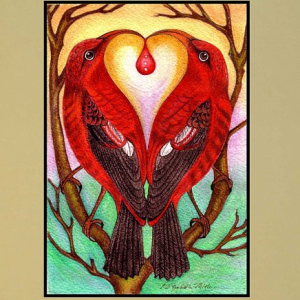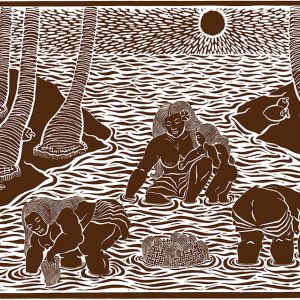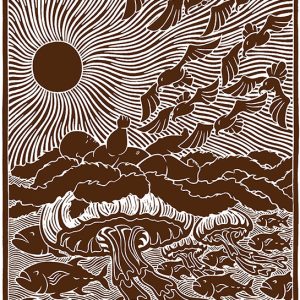“The interconnected space of the sky, ocean and the rocky lava shoreline along the Kona Coast provides a happy home for the rich variety of life in this woodcut print. In the Hawai`ian language the word “kahakai” describes the boundary of the ocean and land.
Kahakai is a special ecosystem that supports ground cover like ‘ākulekule and pōhuehue, along with other salt-tolerant plants like noni, the sculptural milo shrub and the dramatic kou tree. All of these plants, except milo, are indigenous to Hawai’i, meaning they were part of the landscape prior to human occupation. Milo is a “canoe plant,” a treasured resource that was brought by the early Hawai’ians. The wood was valued only second to kou wood for making food bowls and calabashes. Milo bark was also used to make cordage.
The ‘Ūlili (oo-lee-lee), also known as the Wandering Tattler, leaves its winter home in Alaska or Canada and migrates to Hawai’i in August where it hangs out around rocky shores and beaches foraging for food until it is time to head back North for breeding season. During the spring ‘Ūlili can be found with their new suits of dusky barred plumage that signals preparation for their long journey back to their northern breeding grounds.
Look closely at the lava shoreline and notice the pipipi kōlea, or periwinkles, the ‘opihi and the `a`ama crab. These little crustaceans can be found along the rocky shoreline everywhere on Hawai’i island. They attach themselves firmly to the lava and thrive in the surging surf. Gathering, preparing and eating the delicious ‘opihi and ‘a’ama connects Hawaiʻian people to their ancestral ways of interdependence with the land and ocean.
The fragile Hawai’ian shoreline ecosystem has been so impacted by development, pollution and other pressures that it is rare to find all of these species in a single location. After going to several shoreline areas along the Kona coast in search of these plants, I finally found all of them in one place at the Mauna Lani Resort, which is known for their environmental preservation efforts and cultural programs.” – Andrea Pro
This is a multiple-block original woodcut printed on a handmade paper.
You can learn more about Andrea Pro on her bio page here.


